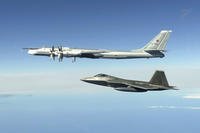Much of the attention in Afghanistan is focused on the pending offensive to retake Kandahar from the Taliban. NATO officials peg the start date for that offensive for some time in June. It will be a difficult offensive because the insurgents operate in the shadows and mainly through intimidation; this won’t be a Fallujah style highly kinetic offensive, but rather a prolonged process to re-establish security and some element of Karzai government presence in the city.
That last bit, of course, is the weak link in Afghan commander Gen. Stanly McChrystal’s whole strategy, but more on that later. If NATO is able to reclaim, and hold and build in Kandahar, recognized far and wide as the birthplace of the Taliban, and a major conduit for weapons and fighters from Pakistan, it will be a huge step towards realizing progress in southern Afghanistan.
Often forgotten in the once forgotten war as all eyes focus on the south are continuing operations in eastern Afghanistan. Defense Tech friend and independent correspondent David Axe has a good report from the Chowkay Valley in Kunar Province, much of which is considered a no-go zone for NATO troops.
“The Chowkay is one of those places on Afghanistan's fringes that are all but off-limits to foreign forces. The existence of such no-go zones, eight years into the Afghan war, represents a huge obstacle to NATO's efforts to uproot criminality and violent extremism. A lack of resources on NATO's part and the total absence of the Afghan government mean the zones are unlikely to disappear anytime soon.The Chowkay shura, led by local elder Abdul Ghafai, was the last stop on a mission lasting several hours for elements of the 173rd Airborne Brigade. It was also a rare event: The last time NATO ventured deep into the valley was in February. Missions that far into the Chowkay are a roughly monthly occurrence, Snowden said. With small contingents of just a few hundred soldiers, each one responsible for several large valleys apiece across eastern Afghanistan, more frequent missions to the more remote locations are impossible.
The Afghan government, for its part, never ventures into the Chowkay unless as part of a NATO patrol. A low-ranking district agricultural official was the only Afghan government representative at the March shura.
An earlier NATO foray into the Chowkay had resulted in the death of an American soldier. "Every time we go into that valley, we lose a guy," said one brigade soldier. He was exaggerating, but only barely. Much of the Chowkay lies beyond the "red line" that demarcates relatively safe territory from that in which patrols must make arrangements for extra support.
On the March patrol, the soldiers had planned for overlapping layers of air support -- first from pairs of gun- and rocket-armed Kiowa scout helicopters, then from U.S. Air Force jets on call at Bagram Air Field, outside Kabul. Air Force Staff Sgt. Kevin Rosner, a specially trained aircraft controller, had been attached to the Army patrol to coordinate any requested air attacks. "There's high potential for going kinetic here," Rosner said, using the military term for direct combat.
"Welcome to Indian country," a soldier said as the patrol reached the valley.”
-- Greg









